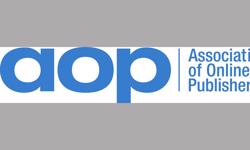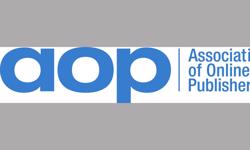There are three key business priorities for premium content publishers that stand out, according to the results of the latest AOP Content and Trends Census, along with a very clear perceived threat and the emergence of new challenges.
Priorities
So let’s start with the priorities, which in summary are data, mobile and multiplatform integration and audience growth. All three are intrinsically linked of course, and represent the growing divergence of media in this rapidly evolving consumer economy, where the mutual relationship between media and audiences is creating both opportunities and challenges.
Data has been a hot topic for some time now, but it’s beginning to have real application as publishers have developed and acquired skillsets, increased technology partnerships, and, through data marketing platforms, been able to use data to increase monetisation and product development. Data capture enabling better behavioural targeting and personalisation is also helping accelerate audience growth.
Data is increasingly being used to drive the content proposition – as some of the feedback from publishers in the report confirms: “Tracking of content performance on newsroom dashboards… deeper analysis of content trends and audience behaviour to inform future content development… using social media and search trend tracking to inform content creation”, “Track top performing content across portfolio, benchmark performance of different content types… use data to understand consumers’ preferences allowing us to then match content to their needs within our own and commercial partners’ requirements. Using data to predict content trends and exploit new opportunities in online distribution.”
Audience growth and audience engagement go hand-in-hand. Growing audience on new mobile focused digital products with supporting investment in editorial, tech and sales resources is common. Data gathering on audience is essential particularly in driving online subs and innovating with new content and ad products. As one publisher stated, the business priority is, “Grow audience… establish thought leadership… invest in content creation… scaling all technology platforms to power this growth.”
Mobile and multiplatform integration is at the core of business priorities, with a mobile-first strategy increasingly the norm. Audience growth is inevitably dependent on successful channel and device strategies delivering content to audiences in the format appropriate to the means of consumption, on the move, at work, at home. Multiplatform integration powered by data is essential and there will be a continuing focus on technical infrastructure, data, insight and content. Responsive design and aggregating services into one proposition is the common view.
Threats
When it comes to threats, it will be no surprise to see the topic of the moment, ad blocking, surface as the greatest perceived threat in the next twelve months. 65% of publishers have rated it as a threat and one in five actually see it as a major threat, far outweighing any other challenges. It’s fair to say that whilst ad blocking has been available for some time, the last six months have seen it rapidly grow in prominence.
The really big challenge for the publishing industry is how to approach it, and there is no silver bullet here. Separate articles may talk about the cause and the cure, but the reality is it’s a thorny challenge, especially in an ecosystem where the most common publishing model is free and unhindered access to content, based on advertising delivering the revenues that enable the publisher to publish!
Have publishers created their own problem? Intrusive ad formats, calls on data with heavy and slow page loads, particularly as we move towards a mobile dominated future, where time and attention are pressured and fleeting, could be said to be driving consumers to seek a faster, smoother web experience. Why not? Because good content cannot sustainably be delivered for free without some other funding to provide the necessary resources. Publishers can appeal to audiences, or indeed threaten audiences - 27% would consider registration or blocking content if an ad blocker is detected – but the reality is that conflict needs to be resolved. It is up to publisher, advertising and technology communities to agree guidelines, acceptable to all parties, that are, above all else, 'consumer first' in their application whilst, honouring the age old preserve that is the 'value exchange'.
AOP's desire is to be both a facilitator and contributor to such discussions. The solution is not to 'block advertising' but to apply rigorous standards that safeguard the consumer’s ability to access quality, trustworthy original content. If that requires publishers and the wider advertising community to remodel and further reduce the overabundance of advertising solutions, to create new standards that negate the appetite or need for ad blocking technology within premium content environments then, that is what must be done.
What of other threats? A third of publishers have nominated clients and agencies becoming content creators, a new finding in this year’s census. A third have also outlined ad fraud as a threat.
Content and context
It’s a well-worn phrase that we’re awash with content and everyone is a content creator now, but there’s no doubt that good content resonates with the right audience and is a powerful tool in engaging and building relationships. It’s a double edged sword, as advertising brands increasingly move to that view (it helps to circumnavigate ad blockers!) but it has to be distributed through the right channels to create that deep engagement with audiences. Of course, options for distribution and targeting are increasing, and with data enabling targeting, messages can reach target audiences in any environment.
Premium content publishers can point to the value of that environment, with deep audience relationships, as being the absolute best in terms of context and trust. Two thirds are creating bespoke content for advertisers now and native advertising is seen as the major opportunity over the next twelve months by one in four publishers.
The major opportunities haven’t really changed year-on-year. Led by native advertising the other key ones highlighted are content marketing (23%), data services (23%) and mobile ads (19%).
The survey, carried out in the summer, suggests that 10% is the average rate of digital ad revenue growth that publishers expect to see in 2016, which is generally in line with other industry forecasts. Over the coming twelve months, the key areas that publishers will concentrate on are developing bespoke content for advertisers (58%), native advertising (54%) and programmatic (50%), with private marketplaces and exposing more first party data at 54% each.
Mobile
There continues to be a strong emphasis on the role of mobile for publishers as they look to change their approach to brand development and new activity, in reaction to increased media consumption across multiple platforms. Publishers are moving away from m.sites and mobile optimised sites however with 79% now applying responsive design across the majority of their portfolio.
If we move onto content models, we see that once again, two thirds of publishers are charging for content somewhere in their portfolio, and 28% have paid apps in their portfolio. At the same time, of course, that also means that a third aren’t charging. Totally free access will be the prominent model once again in around 25% of cases, fewer than the 30% of last year. There will continue to be more experimentation introduced to find value that consumers recognise and accept.
So, if we have around a quarter mainly applying free content access models, we also have 22% who suggest the main model will be freemium and 13% paid apps. We also have 13% seeing free content as the model but only if registration is in place.
On social platforms, Facebook is becoming more prominent for content delivery, with Twitter and YouTube slightly less so year-on-year, with the focus as a priority being 37%, 20% and 13% of publishers respectively. Looking ahead, 52% expect to use Facebook more, compared to 28% for YouTube and 14% for Twitter. However, Instagram is growing in prominence with 38% expecting to use it more over the next twelve months.
Video is continuing to grow in importance with both volume of content and consumption growing, and we’re seeing a small uptick in advertising revenues as publishers make use of video exchanges, sales houses and social media platforms (about one in five for each), rather than direct sell. Whereas last year, 11% of publishers took more than 10% of their total advertising revenues from video, that number is now 12%, a slight increase. 54% of publishers believe that market demand for video is high and they could sell more if the inventory was available, compared to 29% who don’t see growing video inventory as a business priority.
As in previous years, overall, the revenue opportunity via mobile is seen to be mainly hindered by agencies’ attitudes or focus (54%) and the dependency on low yield ad networks (50%). For tablets, it’s the same but to a lesser degree; agency attitudes (39%) and the dependency on low yield ad networks (29%).
The most significant revenue generation models for mobile have shifted towards unique ad formats (68%), up from 53% last year, with video at 50%, and mobile internet sponsorship at 54%.
The main issues affecting mobile and tablet development continue to be in-house skills and resource (36%), device fragmentation and managing multiple tech partners (both 39%) and integrating mobile with current sales teams (29%). However, all are at substantially lower levels than previously, suggesting that maybe mobile is becoming more settled as a core publishing medium.
It will be interesting to see how the threat of ad blocking actually plays out, and it will inevitably lead to further evaluation of the digital publishing model as publishers need to develop and diversify both their content and commercial strategies going forwards.
33 members of AOP, representing over 700 publisher brands and publications, took part in the Content and Trends Census this year. The full report, for AOP members only, can be found here.












